My first trip to Atlanta, GA held many highlights this week. Among them was spending a day on-set with Photographer, Jennifer Davick, Prop Stylist Ginny Branch, Food Stylist(s) Marian Cooper-Cairns & Emily Vann, and Art Director, Tempy Segrest. I’ve been thinking about Southern cuisine ever since- wishing I had some idea how to replicate what Marian & Emily were able to produce in my own kitchen… Incredible. Looking forward to seeing it all in print this February- Coastal Living Magazine. This is an off-set preview of the most beautiful shrimp and grits I’ve ever seen.
I had the pleasure of spending a full day photographing the brilliantly talented and passionate members of Tango No.9 near the Oakland Marina. A few images from our shoot grace the pages of their newly designed website, while others remain tucked in their back-pocket, to be released when you least expect. If you’ve never heard their music, you can listen to their haunting melodies on “Live At The Columbarium” here. It will either make you break into dance, or wish you could.
Jay Shefsky for the Chicago Tonight show at WTTW in Chicago tells the story of Vivian Maier http://www.wttw.com/chicagotonight
This video is a great reason to share your gifts with the world while you’re alive. Don’t just create and store the work in boxes for others to sort through. Let it exist- let yourself exist along with it. Incredible work- and a mystery.
To get familiar with FCPX, I’m working on a series of short videos. I love shooting anything related to music- it helps to have friends who are fantastic subjects, willing to allow my camera in their faces regularly (Thank you Zoli & Tango No.9). This was shot with the 5D MarkII– very low light. I believe I was at 2500ISO, which makes the footage a bit grainy. My exposure: 100 @ f2.8 with Canon’s 24-70 2.8L lens, and I had a shotgun mic attached.
The Red Poppy Art House on 23rd and Folsom St. (Mission) is an intimate space to begin with- but it was so packed on Friday, people were sitting on the floor and standing clear to the doorway. I had reserved a chair on the end of the first row and I was literally stuck there until the intermission. As far a “stuck” goes, this was an amazing location to be stuck, don’t get me wrong. Front row, up close & personal with Greg Stephens’ trombone…
but from a video standpoint- on first glance it did have its limitations. This was not a situation where walking in front of people is an option- and I was fairly sure when the show began, I wasn’t going to be able to capture it from my lack-of-vantage point. However, the longer I sat there, the more I noticed details- shadows and reflections at play. The advantage of sitting in one place- you sit there long enough, and eventually- the magic reveals itself. From my position, I couldn’t clearly see Joshua at the piano due to a music stand, but I started to notice the light refracting through his glasses onto the sheet music.
Although I couldn’t directly see Catherine, I could see her shadow articulated on the red velvet curtain as she played the violin (which I found visually decadent). At the intermission, I walked behind the piano and discovered underneath the mailing list & CD’s for sale, it had a glossy, reflective surface which I’m a bit of a sucker for, I’ll admit. That’s where I stayed for the duration. Combining the two perspectives (wide vs. detail) hopefully creates the illusion of moving around the room.
Final Cut Pro X (FCPX): As I explore this editing program- one of my favorite features so far, is the way you can highlight a section of a clip and keyword it or mark it as a favorite. This is SO efficient compared to my former logging workflow in FCP7. Although I’m still figuring out the best workflow for layering tracks, this basic edit took about 3 hours to edit from import to export.
One confusing element of FCPX- is that the project doesn’t automatically open in the timeline when you close/re-start the program as it did in FCP7. Not only that, but it’s not clear to me, just yet, where the files are going. I shut down my computer prior to exporting and temporarily couldn’t locate my edit when I re-opened the program. Google steered me to a forum that suggested, when you have an external HD attached and event folders on both system and external drive, FCPX may not recognize the project at all. I had duplicate folders on both system drive and external for back-up. Although it seems a bit ridiculous, this did turn out to be my problem. I had to trash the event folders from my main HD, after which my edited project was visible in the viewer (not timeline). Will be looking more into this issue… TBA. I realize what are current annoyances with workflow will soon become second nature. The process of discovery is always interesting if nothing else, right? Here’s the final product…
Last June I had the opportunity to attend a four hour workshop with Vincent Laforet in NY at the PDN conference and it was loaded with information about DSLR techniques for multimedia and filmmaking (check the archives for a detailed report). This week, no matter where you are, you can get in on Laforet’s wealth of inspiration and information from the comfort of your own home. Check it out:
2 Exciting (and free!) online Vincent Laforet events:

I. Laforet with Chase Jarvis Live this Wednesday March 1st, 2011
The details:
In this 90 minute show, we’ll talk shop, cut thru all the fluff, cut past Reverie and all the hubub to the meat of the things that matter. We’ll also be taking your questions LIVE via my @chasejarvis twitter handle, hashtag#cjLIVE.
It’s free. It’s live. Just point your web browser tohttp://www.chasejarvis.com/live on Wednesday.
Who: You, Me, Vince Laforet + a worldwide gathering of photographers and filmmakers
What: Get to know the real Vince Laforet and his career + answer your questions LIVE
When: this coming Wednesday, March 2nd at 10:00am Seattle time (1pm NYC or GMT -8)
Where: just visit http://www.chasejarvis.com/live
Want to get Vince to answer YOUR questions?
II. A 72 hour workshop with Laforet online, hosted by CreativeLive
From Laforet’s blog (http://blog.vincentlaforet.com/ See the blog for a full schedule)
This coming Friday through Sunday promises to be a very exciting 72 hours! As most of you who read the blog know – we will be shooting and broadcasting live on web the second part of our creativeLIVE HDDLSLR workshop titled “HDDSLR – Moving From Still to Video with Vincent Laforet”
The workshop will be broadcast free during that 72 hour period and go on sale thereafter.
We will also be giving away an insane amount of gear during the workshop – to be eligible to win it – all you need to do is to follow @creativelive and @vincentlaforet on twitter – that’s it! We’ll send everyone more details as we get ready to give stuff away.
For those of you who took part in the first workshop a little under a year ago – here’s how this workshop will differ from that one. The first workshop focused heavily on gear and theory. We did a little bit of shooting and a quick edit. This workshop will flip that around – we’ll focus a bit on some new gear, and on some other important things you need to know prior to any shoot. But most of our time will be spent actually shooting. We’ll discuss a little theory of course – but ON SET and DURING a shoot. We will also devote a good chunk of the first day to workflow – both with Apple’s Final Cut Studio and Adobe’s CS5 suite, from ingest to output – and even backup – something a lot of this blog’s readers have been clamoring for for awhile!
Wondering what the future holds for documentary photographers? Visual Journalists are defining and re-defining their future and the way their living is made on a daily basis. Photoshelter hosted a conversation to dig into this topic. As per the Photoshelter description: “The panel included photojournalist James Estrin of the New York Times LENS Blog, TIME Magazine Deputy Photo Editor Paul Moakley, director of CLAMPART Brian Paul Clamp, and Bess Greenberg of 25CPW.”
You can join the conversation on Photoshelter’s Blog.
SFBAPPA’s (San Francisco Bay Area Press Photographers Association) annual Multimedia Workshop was an infusion of inspiration & continuing education for current members- incredible meeting of the minds, so to speak. If you missed it this year, consider joining SFBAPPA and mark your calendar for the first week of Dec. 2011. Kim Komenich, Dai Sugano and Paul Sakuma chaired this year’s event and did an incredible job organizing interesting speakers to move the multimedia conversation forward.
It will take me a while to unpack and integrate the pages and pages of notes I scribbled- here’s the abbreviated highlights:
Theo Rigby (Documentary Filmmaker) presented new things for still photographers to consider as they cross over to multimedia and film.
• Production process- sorting through 300 hours of footage for a 1 hour film (4-5 months production).
• Music copyright: Did you know you can get sued if “Happy Birthday” is heard in your film/multimedia? I didn’t!! “Fair Use” applies only if you are critiquing copyrighted material in an educational format. I learned there is actually a form to sign via your lawyer for “fair use”.
• If you want to incorporate footage from the news (ie: NBC)- it’s $50/second with a minimum purchase of 30 seconds.
Rigby also discussed his film “Sin Pais” which was in a film festival in Amsterdam recently (congrats Theo!)
http://player.vimeo.com/video/11124305?title=0&byline=0&portrait=0
Sin País (Without Country)__Trailer from Theo Rigby on Vimeo.
I can’t wait to see this in its entirety.
Powerhouse Panel:
1. Radio Photojournalist, Lonny Shavelson spoke about funding independent projects- sometimes you have to do the project before the funding can be found. His advice- follow the stories you’re passionate about- the ones you “must” tell- not just the ones that pay.
2. Kathleen Hennessey, Former editor of the SF Chronicle- now with the incredible nonprofit organization: Photophilanthropy spoke about hope.
Quotes of the day:
“Sometimes when you follow your heart, the people you need to work with appear.”
“The part of you that must make pictures is independent of the job.”
“Don’t complain about what you don’t have, use what you’ve got.”
Hennessey mentioned ways in which freelancers are beginning to organize towards benefits- check it out:
• media workers union
• Media Workers Guild (CA)
• freelancer’s union
Geri Migielicz of Story4.org talked about the demand of multimedia marketing pieces for nonprofits.
Things to consider:
•Personal storytelling vs. talking heads.
• Tight, focused message- clear goals
• Distribution Plan
• What is the message and WHO is your audience? The who impacts HOW you convey your message.
Check out the new piece produced by Story4 “Interrupted Lives” (this is the trailer)- notice Richard Koci Hernandez’s powerful use of Adobe’s After Effects on the titles and photos (more about this later).
Josh Wilson- publisher of newsdesk.org, talked about new ways to get your story published and to fund stories you care about.
• spot.us– is a community involvement site. You can suggest a story and people can donate to help make your story happen if it’s something they also care about.
•kickstarter.com– another way to “fund and follow creativity”. With your project on kickstart, it looks like you can get an interactive map, post audio updates etc. for those who want to follow the process of your story’s creation. Very cool concept- not limited to photography at all.
Josh talked about lots of independent news desks popping up- he said some are sustainable and some aren’t… what I left unclear on is what a “sustainable” model is and which ones he considers to be…
I’m thrilled to learn there is an app for mobile model releases! If you’ve ever walked around on a shoot with the stack of release forms to be signed- it’s a pain. What’s more of a pain is scanning them later- I’m thrilled at the idea that there’s a mobile app for this. I have the Android- so for my phone, I found “Model Release Pal“- (free). You can input notes about the model and/or shoot, attach a contract, and have them sign with their finger or a stylus. I tried signing with my fingernail- it hardly looks legible- but it has potential. A stylus will be in order. Exciting technology!
Following the panel, I went to 3 workshops: Richard Koci Hernandez’s intro to After Effects, Suzanne Yada’s Social Media Presentation, and LiPo Ching from the SJ Mercury News on FCP tips and “Soundsoap”.
If you check out multimediashooter.com, Richard Koci Hernandez‘s blog- he has a post chocked full of examples of interesting projects and title sequences all made with Adobe’s AfterEffects called: “Why You Should Learn After Effects Now”. I haven’t tried it yet, but the interface is fairly similar to Final Cut Pro- he made it look quite easy (but we all know how that goes…)! I believe we’ll see less and less of the “Ken Burn’s Effect” and more 3-D movements as this software evolves and more still photographers learn it. Check out the 3-D effect on the stills in the trailer for “Riding Giants”
We discussed ethics- because you do have to manipulate your photo by cloning background areas to create this effect. Things to consider: how long the ‘effect’ is on screen, intention, deception/cloning.
Other gems:
• RKH recommended “Rescue Time” software which tracks how much time you spend in each application. I’m trying out the free “lite” version today for the first time. When you don’t type for a while, the computer asks you “where have you been for the last ‘x’ minutes?” I can see this having great potential for those of us who are freelancing and multitasking. The ability to track how long projects are actually taking- (although I don’t know about you- but it might be sobering to see the actual time I’m spending on projects…)
• Revostock: You can purchase After Effects scripts and insert your own footage
Suzanne Yada (Social Media Expert)
I admit it, I’ve had a strong aversion to ‘Twitter’. I’m a private person, and broadcasting anything is simply going to have to be an acquired taste… I signed up a couple of years ago, and have made a whopping two tweets. Suzanne explained the point of Twitter, and outlined how to use it with goals and purpose (yes!). Not of this random business… she truly made the twitter-beast less intimidating to incorporate into the workflow. She has a detailed “resource” page attached to her blog, generously helping the world become adept with social media (check it out!).
A few Suzanne Yada tips:
• 1 in 7 tweets should be about you. The other 6 should be links to other people.
•hootsuite: manages your individual social media sites such as facebook, twitter
• Get your free Photoshelter, 55 page “social media” pdf here
•Use your “Twitter Manager” to divide the tweets you’re following into category lists so they’re not as overwhelming
•Use bit.ly to shorten long URL’s to fit in your twitter posts (140 characters)
• # is called a hash tag, which turns any word it precedes into a searchable ‘key word’ making it easy for twitter users to search topics they’re interested in. I found this helpful article today when I was clarifying my notes called “The Twitter Hash Tag: What is It and How Do You Use It” and to shed even more light on the “hash tag”
Last but not least… ever capture shaky video and wish you could stabilize it? San Jose Mercury News LiPo Ching demo’d Motion’s “Smooth Cam” filter- I was impressed, it worked like a charm. When you send your clip to ‘Motion’ via ‘FCP’, your clip is automatically updated in FCP when you save your work. I will be trying it out on my system in the near future… TBA
In a nutshell- that’s the news from SFBAPPA’s multimedia workshop 2010.
Thanks again to Paul Sakuma, Kim Komenich and Dai Sugano for creating this experience.
As if simply BEING in NYC wasn’t inspiring enough for the PDN Photoplus Expo… I attended a workshop with one of my hero’s in the industry: Pullitzer prize-winning photojournalist-turned multimedia guru: Vincent Laforet. I attended Laforet’s multimedia workshop where I learned advanced techniques for using my HDSLR (5D MarkII) for filmmaking. While I’m technically using the same camera for still and video, the accessories and way of “being” with the camera is a whole new world. Forget the days of roaming free with the camera as a still photographer- when shooting video, think strategies for stability… I tried two shoulder rigs made by Redrock Micro- Laforet showed the different features and confirmed that you truly do get what you pay for rigs . Laforet and crew showed us some complex gear such as the techno-crane on a track for making smooth camera movements around a subject. With the techno crane, one person is in charge of focus, one person directs, one pushes the crane/camera around the tracks and controls the hydraulics for smooth raising/lowering of the camera.
If you are interested in multimedia and you are unfamiliar with Vincent Laforet’s blog– it’s one of the best references out there. He constantly tests equipment and posts his findings as well as new techniques. Although this workshop was gear-heavy, Laforet reminded us that “just because it exists… you don’t have to have it. The more gear you have the more you will be slowed down by it.” Thank you! I find that too often, we (photographers) become focused on gear rather than storytelling.
Let’s get back to storytelling: Laforet’s visual storytelling is solid and incredibly inspiring. Reverie is fairly formulaic- and it works SO well…
Inspiration:
See: Nocturne and Reverie
So if you have the opportunity to take a workshop with Vincent Laforet, jump at the opportunity. He is truly a wealth of information and creative inspiration. He might embarrass you (ask Anne Margaret) but you’ll walk away with new perspective and deeper understanding.
I’ve had the honor of photographing students, families and some of the key leaders for public school reform for the National Equity Project (formerly BayCES) this year. The portraits will be part of a permanent exhibit in their newly remodeled office in downtown Oakland, installed November 2010.
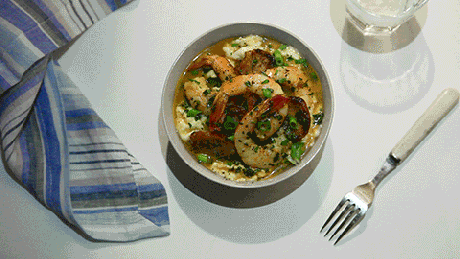
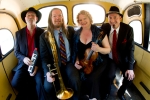
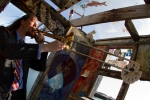
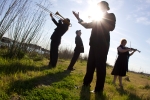





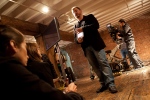
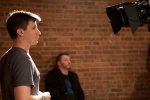
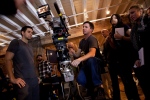
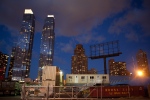

 Marantz PMD 660 User's Manual .PDF
Marantz PMD 660 User's Manual .PDF